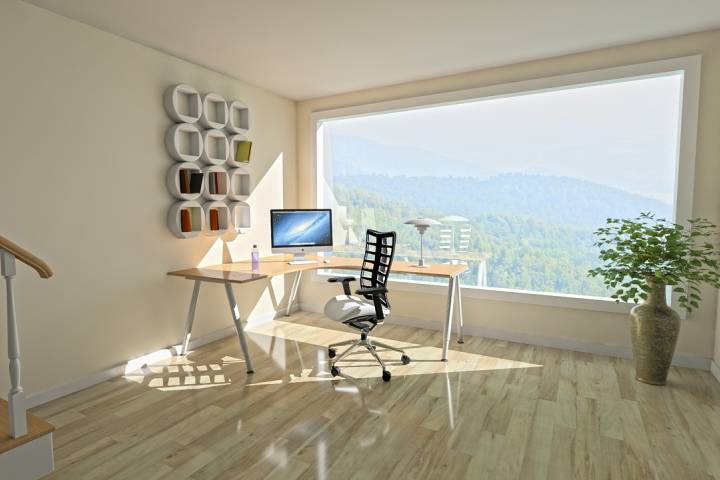A room or other area in which the number of environmental pollutants may be managed is called a cleanroom. The majority of places that have them manufacture products or conduct scientific research. These places have strict requirements regarding the number of airborne particles, chemicals, and microorganisms in the environment.
Let’s look at some of the necessary equipment during the setting up phase.
1. ULPA and HEPA filters
To remove 99.97% of particles with a diameter bigger than 0.3 microns, HEPA filters use a randomly formed mat of fibers. ULPA filters may filter out 99.999% of particles with a diameter bigger than 0.12 microns.
These filters maintain a nearly constant air processing that forces airborne particles to fall toward the floor, which is then captured by filters and sucked out of the room.
2. HVAC systems
Heating, ventilation, and air conditioning are the three components that make up the HVAC acronym. The temperature and humidity of the cleanroom may both be regulated with the use of these different technologies.
Because of the heat generated by the air filtration equipment, the lighting, and the procedures being carried out, most rooms require continuous cooling. The degree of heat must also be managed to keep the temperature at an appropriate level for employees to work in comfort.
Workers require a temperature range of 72 to 75 degrees Fahrenheit since they frequently wear protective coveralls over their clothing. Similarly, humidity management is necessary to prevent the corrosion of materials and condensation in work locations and keep workers comfortable. The humidity should be between 30 and 70 percent for workers to feel comfortable.
3. The use of rugs and flooring
Mats and floors designed to capture dust and other particles are another means of preventing contamination in these kinds of rooms. These high-adhesive unique peel-off surfaces offer an additional method for removing particles driven toward the floor by air filtration systems. They may be peeled off easily.
As a result of the high cost of cleanroom furnishings, space is at a premium. In a cleanroom, any furniture used should be made of stainless steel and constructed to interfere as little as possible with the passage of air.
In most cases, this is accomplished by designing the vertical faces of the structure to be solid while the horizontal surfaces to be perforated to facilitate an easier flow of air. It is common practice to use things like stainless steel tables and trolleys. The excellent hygiene standards offered by stainless steel can satisfy the criteria for a clean space.
4. Garments that offer protection
To prevent contamination caused by the human body, specially tailored clothing is worn. This may involve using goggles, face masks, coveralls, overshoes, boots, gloves, and overshoe covers.
Conclusion
When we consider the purposes for which cleanrooms are often put to use, all of these safety measures come into sharper perspective, like some others in the technology field, such as cleanroom laptops and waterproof computers.
They are versatile enough to be set up for procedures as different as analyzing rocks from the moon and inserting microchips into missile systems that are used to deliver nuclear weapons. Because of this, they are required to comply with the most stringent industry requirements.
Tech Trends
Related posts
Leave a Reply Cancel reply
Hot Topics
Categories
- Ads (5)
- Animes (25)
- Artificial Intelligence (AI) (35)
- Augmented Reality (AR) (10)
- Automotive (9)
- Bitcoin (16)
- Blockchain (23)
- Business (244)
- Business Intelligence (3)
- Cloud Computing (23)
- Computer (127)
- Concrete Technology (1)
- Cryptocurrency (10)
- Cybersecurity (39)
- Data Science (9)
- Database (4)
- DevOps (6)
- Digital Marketing (76)
- Digital Workplace (14)
- Ecommerce (1)
- Education (28)
- Electric Vehicle (EV) (1)
- Electronics & Hardware (16)
- Entertainment (42)
- Fabrication (3)
- FAQ's (1)
- Finance & Marketing (47)
- Gadgets (34)
- Games (8)
- Gear (29)
- HTTPS (1)
- Industry (46)
- Information Technology (88)
- Internet (413)
- Internet of Things (IoT) (40)
- Job (25)
- Machine Learning (5)
- Marketing (92)
- Mobile Apps (21)
- Movies (11)
- Natural Language Processing (5)
- News & Trends (108)
- Programming (4)
- Science & Technology (233)
- Security (78)
- SEO (56)
- Services (36)
- Social Media (73)
- Software (97)
- Sports (1)
- Technology (304)
- Telecom (6)
- TikTok (5)
- Tours & Travels (9)
- Uncategorized (11)
- Virtual Reality (VR) (7)
- VoIP (4)
- Web Technology (42)
- Workforce (17)
- Workspace (6)



Stay connected